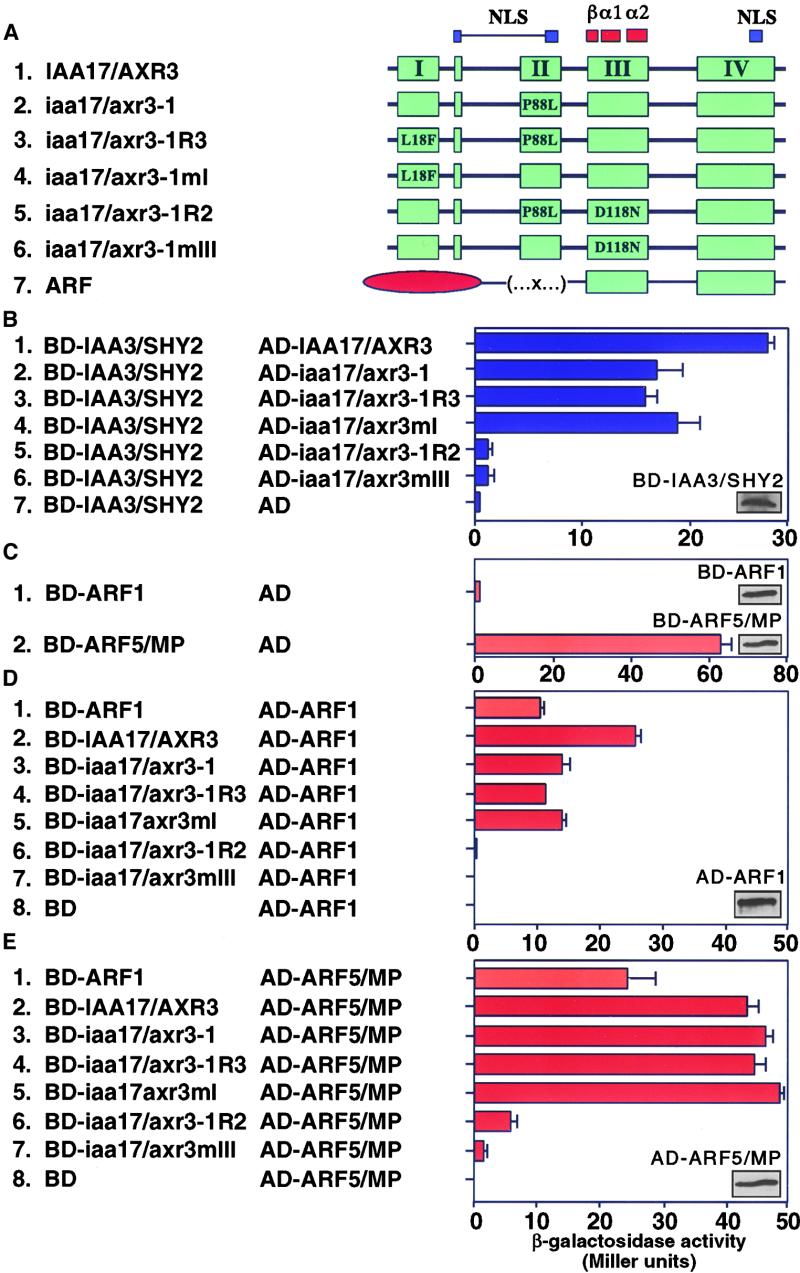Figure 6.
Heterodimerization of the Wild-Type and Mutant Forms of IAA17/AXR3 with IAA3/SHY2, ARF1, or ARF5/MP.
(A) Scheme of the constructs used. The coloring and designation of conserved elements are the same as in Figure 3A. The conserved DNA BD found in the ARF proteins is shown as a red oval. The amino acid changes and their positions in the mutant protein are indicated. The different cDNAs were fused in frame at the 3′ end of either the GAL4 AD or the GAL4 DNA BD.
(B) Analysis of the ability of wild-type and mutant forms of IAA17/AXR3 to heterodimerize with IAA3/SHY2. The inset section shows an immunoblot demonstrating the expression of BD-IAA3/SHY2.
(C) Analysis of the ability of BD-ARF1 and BD-ARF5/MP to activate transcription in Y190 cells. The inset sections show immunoblots demonstrating that the BD-ARF1 and BD-ARF5/MP proteins are expressed at similar levels.
(D) Analysis of the capacity of ARF1 to homodimerize and heterodimerize with the wild-type and mutant forms of IAA17/AXR3. The inset section shows an immunoblot demonstrating the expression of AD-ARF1.
(E) Analysis of the capacity of ARF5/MP to heterodimerize with ARF1 or the wild-type and mutant forms of IAA17/AXR3. The inset shows an immunoblot demonstrating the expression of AD-ARF5/MP.
The level of β-galactosidase activity was determined using orthonitrophenyl-β-d-galactopyranoside as a substrate. The values shown are averages of triplicate assays performed with at least two independent yeast colonies. Error bars represent the standard deviation. AD, plasmid with the GAL4 AD alone; BD, plasmid with the GAL4 BD alone.

